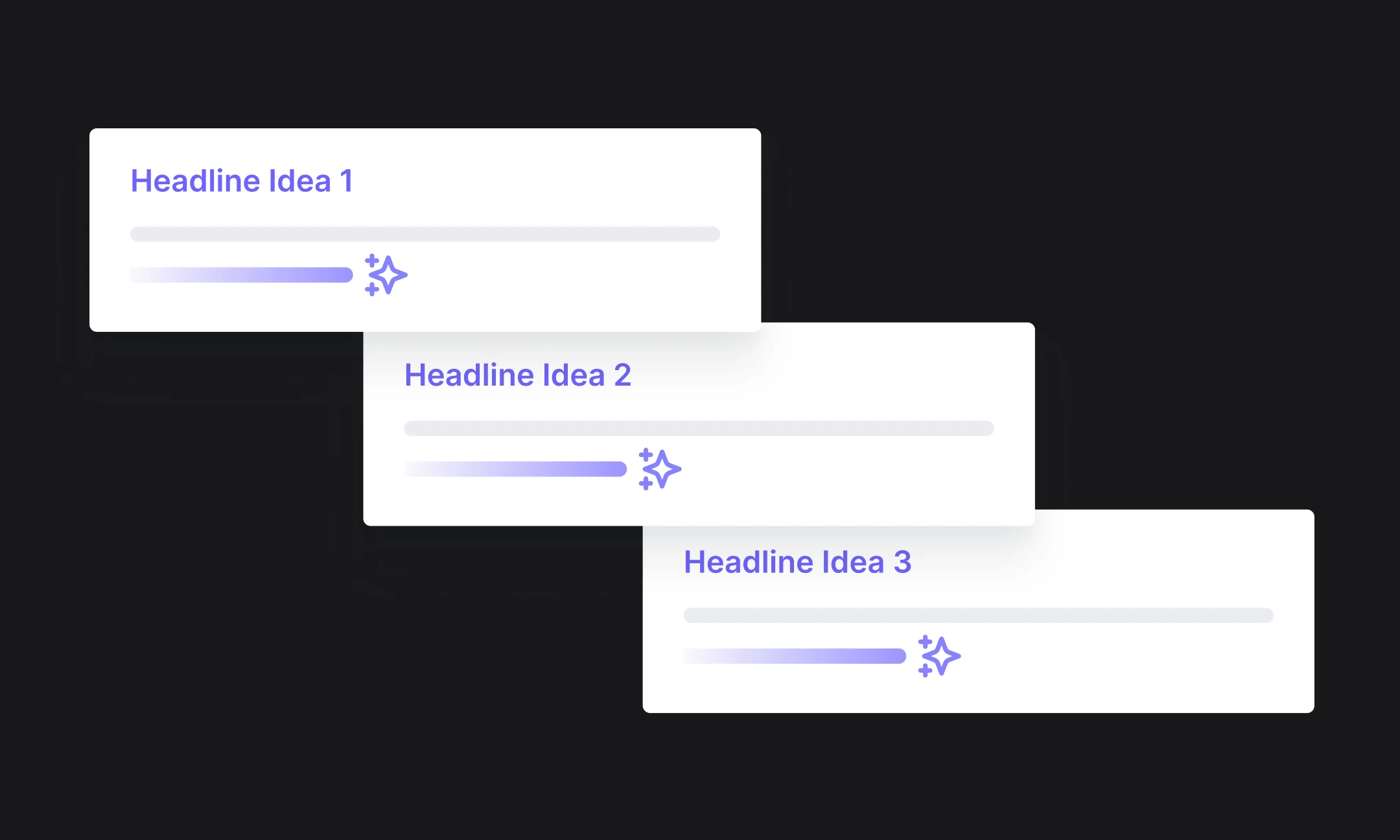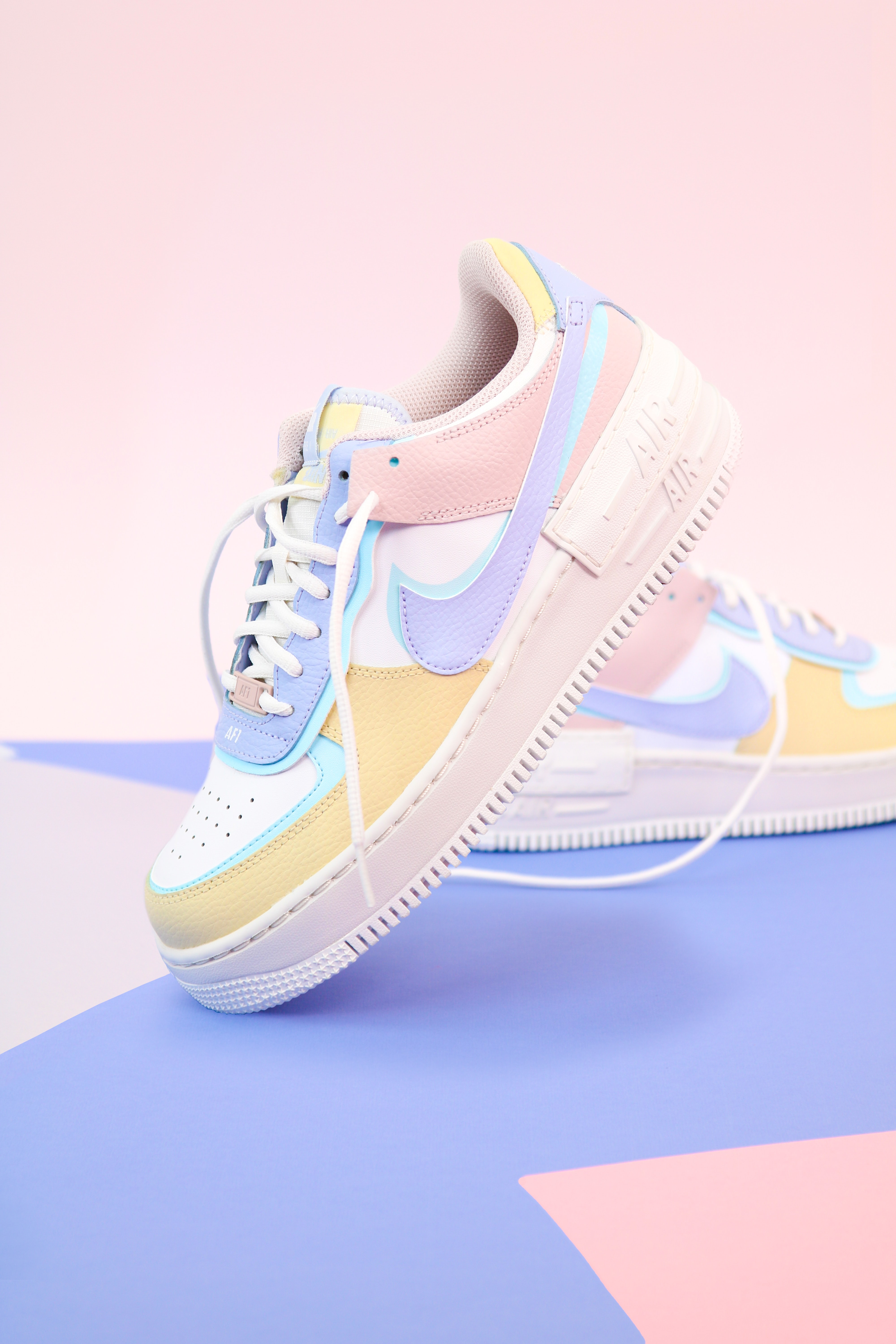Generate compelling headlines instantly.
Describe your topic and keyword

Select your favourite title

Brainstorm more headlines

Eye-catching titles at your fingertips
Cool titles written by our AI article headline generator
First impressions last. Great titles are clear, succinct, and straightforward. They evoke the interest of the reader, set the tone for the rest of the article, and tell the reader what they can expect from the article without over-promising or under-delivering.
If you need some inspiration, here are some of examples of strong titles that our headline generator tool has produced that are sure to capture the attention of your target audience.








Frequently Asked Questions
What is a headline generator?
A headline generator is a type of software that helps you create headlines for your articles or blog posts. It can be a great tool to help you come up with new and interesting headlines, especially if you're struggling to come up with something that's catchy and attention-grabbing. Previous versions of headline generators used templates, which would provide you with a selection of pre-determined headlines to choose from. However, the best use of headline generators now is through the use of AI, which can create custom headlines for you based on the content of your article.
What's considered a catchy headline?
There's no one-size-fits-all answer to this question, as the definition of a catchy headline can vary depending on who you ask. However, a good rule of thumb is to think about how you can hook your readers and pique their interest from the get-go. One way to create a catchy headline is to be creative and try to come up with a original angle. You can also make use of puns, alliteration, or rhyming words to make your headline stand out. Additionally, it's important to make sure your headline is clear and concise, and that it accurately reflects the content of your article. Ultimately, it's up to you to decide what makes a good headline, but keeping the above tips in mind should help you create something that readers will want to click on.
How do you write a headline?
There's no one-size-fits-all answer to this question, as the best way to write a headline depends on the specific content and target audience of your article. However, there are a few general tips to keep in mind when writing headlines: 1. Make sure your headline is catchy and interesting. Your headline should capture the reader's attention and make them want to learn more about your article. Try to avoid boring or generic headlines, and think outside the box to come up with something unique and eye-catching. 2. Make sure your headline is relevant to your content. Your headline should accurately reflect the topic of your article. If readers click on your article expecting one thing, but they find something completely different when they start reading, they're going to be disappointed � and might not come back for future articles. 3. Make sure your headline is easy to understand. Your headline should be clear and concise, giving readers a brief overview of what the article is about without being too wordy or confusing. Try to use simple, everyday language that most people will be able to understand.
Is a title the same as a headline?
There is definitely some overlap between titles and headlines, but they're not exactly the same. Titles are typically used when talking about a book, article, or other piece of writing, while headlines are used when talking about news stories or blog posts. That said, the line between them can be blurry. For example, a headline might also be the title of an article, or a title might be used as the headline for a blog post. And sometimes newspapers will use a headline for an article on the front page, and then use the title of the article for the byline on the inside pages. Overall, though, titles and headlines generally have different purposes. Titles are meant to give readers a sense of what the piece is about, while headlines are meant to grab people's attention and make them want to read more.
Is Hypotenuse AI's headline generator free?
Yes, Hypotenuse AI's headline generator is free to use during our 7-day free trial. You can generate an unlimited number of headlines using the tool, and there are no restrictions on how you can use them. However, if you want to generate more than the words given to you for the trial, you'll need to purchase a plan.
The benefits of a great headline
Why are article headlines important?
Just like how we often judge books by their covers, we judge websites/articles by their titles and headlines.
In fact, your title could be the only reason why your website is not reaching its fullest potential. Just by making some changes to your headline, you can increase the traffic to your site by up to 500%.
When creating a website, you want more people to visit your website and interact with your content. The more engaged and bigger in volume your audience is, the more likely that your site will grow and prosper.
Titles occupy an exclusive place in the content you present to a reader and readers often decide whether or not they ought to click on the link or stay just after reading the title.
This means that the title might be your only chance to make a lasting first impression so it’s important that it’s a strong one. Write a title that showcases the best version of your article and grabs the attention of the reader.
What makes a good, catchy headline?
We think a strong title should be simple, informative, and straightforward. This means effectively condensing the gist of the article to let your target audience know what to expect and whether or not the article is worth reading or not.
The best titles are eye-catching and compelling but not spammy and clickbaity. It sets the right tone for the article and uses a very deliberate and precise selection of words. For example, a more casual title with informal words sets a precedent for a more conversational or fun article while a more serious title paves the way for a more academic and scholarly article.
Here are a few examples of effective headlines:
1. "How to Use a Headline Generator to Write Better Headlines"
2. "3 Simple Tips for Writing Effective Headlines"
3. "How to Make Your Headlines More SEO Friendly"
4. "5 Ways to Make Your Headlines More Engaging"
What can you do to make a headline more compelling?
How much traffic are you losing from your title? It turns out that 80% of people will read your title but only 20% of people will actually click through, which means a title is critical for an article’s viewership and traffic.
If you want to learn how to write impactful titles that drive engagement, keep reading. We'll share tips on how to write strong headlines and titles.
- Be specific and relevant: Make sure your headline is specific to the article you're writing and that it accurately represents the content.
- Use exact keywords: Using keywords in your headline can anchor the topic in your reader's mind, and also improve your SEO ranking by signalling relevance to the search engine.
- Keep it short: Headlines should be around 6-8 words long for the best results (and to avoid being cut off in search results).
- Use numbers and statistics: Numerals against a line of text stand out, making your headline more eye-catching. Instead of writing a headline with the words “five ways”, write a headline with the words “5 ways”.
People naturally gravitate towards specific statistics, which also make you sound more credible and trustworthy.
- Create a sense of urgency: If possible, try to create a sense of urgency or excitement in your headline to encourage readers to click through.
- Brainstorm, brainstorm, brainstorm!: To make sure your article ranks well and your headline is clickable, maximize your chances by brainstorming a variety.
Try writing a dozen or more headlines before choosing the best. If you’re having trouble coming up with that many headlines, maybe our headline generator can help.
How long should a headline be?
Titles need to be long enough to effectively communicate the gist of the article but short enough such that it doesn’t get cut off in the SERP and isn’t too much to take in. The ideal length? Research show it’s somewhere around 60 characters.



.svg)















